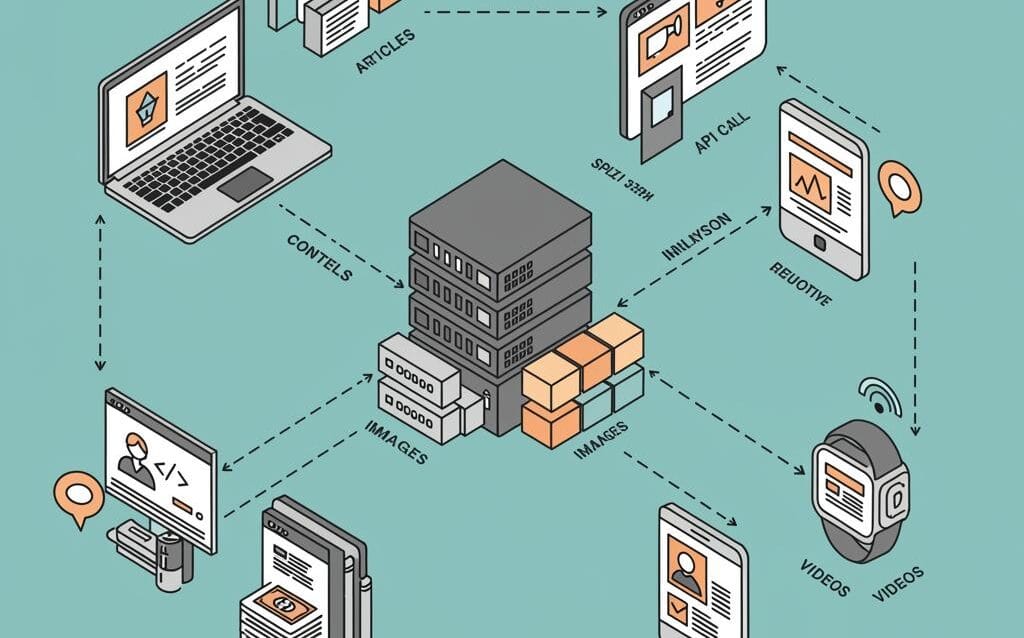Headless CMS Architecture: Is It Right For You?
Headless CMS Architecture: When to Choose This Approach
The digital landscape is constantly evolving, demanding more flexibility and agility from content management systems (CMS). Traditional, monolithic CMS platforms, while powerful, can sometimes struggle to keep pace. Enter the headless CMS architecture, a modern approach that decouples the content repository (the “body”) from the presentation layer (the “head”). This allows content to be delivered across various channels and devices through APIs, offering unprecedented flexibility. But is a headless CMS right for you? This post explores the scenarios where a headless approach shines, helping you determine if it’s the right fit for your needs.
Understanding Headless CMS: The Core Concept
At its heart, a headless CMS is a content repository that focuses solely on storing, organizing, and delivering content via APIs. Unlike traditional CMS systems that tightly couple content creation with a specific front-end presentation layer (like a website theme), a headless CMS provides the content as structured data, typically in JSON or XML format. This data can then be consumed by any application, website, mobile app, or even IoT device capable of making API requests.
The Decoupling Advantage
The separation of concerns is the key benefit. Content creators can focus on crafting engaging content without worrying about the technical details of presentation. Developers gain the freedom to use their preferred front-end technologies and frameworks to build customized user experiences.
When Headless CMS Makes Sense: Key Use Cases
While the flexibility of a headless CMS is appealing, it’s not always the best solution. Here are some scenarios where a headless architecture truly excels:
Omnichannel Content Delivery
If you need to deliver content to multiple platforms beyond just a website (e.g., mobile apps, smart speakers, digital signage, IoT devices), a headless CMS is a strong contender. The API-first approach allows you to seamlessly distribute content to each channel without needing to create separate content silos.
Complex and Highly Customized Front-Ends
When your website or application requires a highly customized user experience that goes beyond the capabilities of traditional CMS themes and templates, a headless CMS provides the necessary freedom. Developers can leverage modern JavaScript frameworks like React, Angular, or Vue.js to build bespoke front-ends that precisely match your brand and user needs.
Performance and Scalability Requirements
Headless CMS architectures often lead to improved performance and scalability. By decoupling the content repository from the presentation layer, you can optimize each component independently. Caching strategies can be implemented more effectively at the front-end, reducing the load on the CMS and improving response times.
Content as a Service (CaaS) Model
If you envision your content as a reusable resource that can be consumed by multiple applications and services, a headless CMS aligns perfectly with a Content as a Service (CaaS) model. This allows you to centralize content management and ensure consistency across all your digital touchpoints.
Considerations Before Choosing Headless
Before jumping into a headless CMS, it’s crucial to consider the following:
Increased Development Complexity
Implementing a headless CMS typically requires more development effort compared to using a traditional CMS with a pre-built theme. You’ll need developers to build the front-end applications and integrate them with the CMS API.
Previewing and Content Authoring Experience
Traditional CMS platforms often provide a WYSIWYG (What You See Is What You Get) editor that allows content creators to preview their content in real-time. Headless CMS platforms may require additional configuration or custom development to provide a similar previewing experience. Carefully evaluate the content authoring experience offered by the headless CMS you’re considering.
SEO Considerations
SEO (Search Engine Optimization) is crucial for website visibility. When using a headless CMS, you need to ensure that your front-end applications are properly optimized for search engines. Server-side rendering (SSR) or pre-rendering techniques may be necessary to improve SEO performance.
Evaluating Headless CMS Options
The market offers a variety of headless CMS solutions, each with its own strengths and weaknesses. Here are some factors to consider when evaluating your options:
- API Capabilities: How robust and well-documented is the API? Does it support the features you need?
- Content Modeling: How flexible is the content modeling system? Can you easily define custom content types and relationships?
- Scalability and Performance: Can the CMS handle your expected traffic and content volume?
- Security: Does the CMS offer adequate security features to protect your content and data?
- Pricing: What is the pricing model? Does it align with your budget?
Conclusion: Making the Right Choice
A headless CMS offers unparalleled flexibility and control over your content delivery. It’s a powerful tool for organizations that need to deliver content across multiple channels, build highly customized user experiences, and prioritize performance and scalability. However, it also requires more development expertise and careful consideration of factors like content authoring and SEO. By carefully evaluating your needs and the available options, you can determine if a headless CMS is the right architecture to empower your content strategy and drive digital success.

